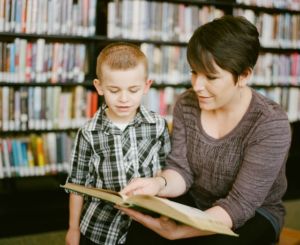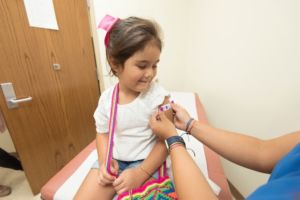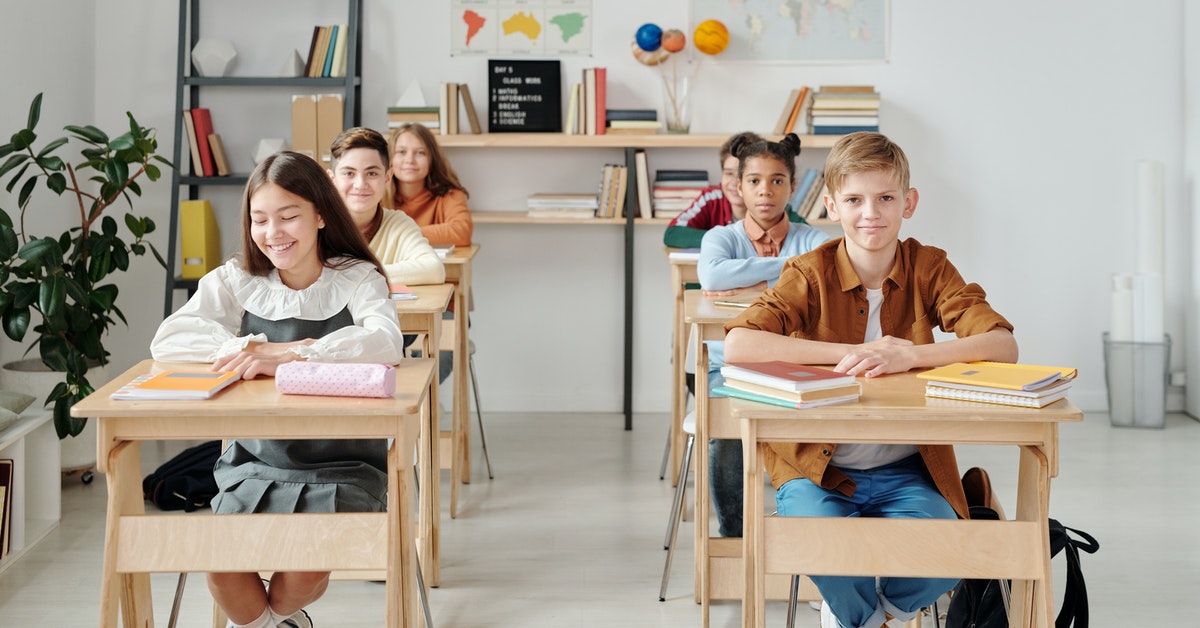Most kids in the U.S. are heading back to in-person learning this school year. While some kids and families may be thrilled about this, others are feeling uncertain. The transition for kids who’ve been away from in-person learning can be difficult, especially for those who thrive on routine. Some kids might feel out of practice with getting out the door in the morning and interacting face-to-face with teachers and peers.
Here are five tips to help your kids have a smooth, healthy transition back to in-person learning:

1. Establish a New Routine
Getting organized and out the door can be difficult, especially when parents also need to get to work. Establishing and practicing a morning routine before the school year begins can make that first week back smoother. Remember that kids need anywhere from nine to ten hours of sleep depending on their age, so establishing a good bedtime routine is also essential. If everyone has been in the habit of staying up later and sleeping in, it’s a good idea to start rolling bedtime forward by about half an hour every night. Do this until you reach a bedtime that will allow for enough rest during the school year. Getting enough sleep will make it easier for kids to get up on time and focus in class.
It can be helpful to talk to kids before the school year begins about expectations for homework times and down-times on school days. Managing after-school hours to provide a good balance between necessary tasks and play is vital to a child’s mental and physical health. Kid’s who’ve gotten used to a lot of family time this last year may miss that once the “normal” routine resumes. Making time on weeknights and weekends for family time can improve children’s mental health and behavior.

2. Manage Expectations and Anxiety
Kids may have trouble understanding why it’s safe to return to school. Some may feel anxious about going back. Kids who struggle with social anxiety may have a tough time with the idea of being surrounded by peers again. Talking with your child about these fears and providing age-appropriate guidance can help them feel more comfortable about making the transition back. Organizing small social activities with your child’s friends before school starts is an excellent way to help them feel more confident about socializing at school.
Even though many schools are returning to near-normal, there may still be some differences from what your child remembers pre-covid. Preparing your kids for these differences and explaining that the situation could still change can be helpful. Both kids and adults benefit from having clear expectations.
Kids have been through a lot this year, so don’t hesitate to seek help for your child if they seem overly anxious or depressed.

3. Use Positive Language about School and Learning
Kids take their cues from their parents, so modeling a positive attitude about school is important. Studies have shown that children whose parents support teachers and value education are more likely to take school seriously and behave appropriately in class. While it is good to acknowledge a child’s fears or concerns, it’s also vital to help them focus on what they enjoy about school. Talking with your kids and helping them remember their favorite parts of the school year can relieve anxiety and give them something to look forward to.
Encouraging younger learners to read or practice other skills before school starts can help them be more confident and prepared for their first day back. This is especially important this year since many kids may have missed out on some learning last year.
Establishing positive communication with your child’s teachers at the beginning of the year is a good idea. That way, as questions or concerns arise, you will be better able to reach out and find solutions.

4. Review Academic Expectations
Last year flexibility was key. Many teachers and administrators loosened deadlines for assignments and found ways to work around an unprecedented situation. This year’s expectations will be more traditional, especially as the school year goes on. You can prepare your kids for this by reminding them that in-person learning is different from at-home.
Little children might need to be reminded to dress for school if they were in the habit of wearing pajamas for at-home learning. Older kids may need extra reminders about what supplies to take to school and how to organize their assignments and materials throughout the day. They may also need to be told that deadlines on assignments are back to being hard and fast and that they shouldn’t expect exceptions. While it’s true that many schools may remain somewhat flexible at the beginning of the year as they test where children are academically, this won’t be the case in the long run. Preparing kids now to meet “normal” academic and behavioral expectations will help prevent misunderstandings.

5. Catch up With Pediatric Care
Many kids have missed out on needed vaccines and checkups during the pandemic. Before school starts is a good time to take care of these appointments. Pediatric chiropractic care can also be beneficial for kids preparing to sit at a desk all day. Studies have shown that chiropractic care for children has many of the same benefits as for adults, including boosting immunity, relieving stress, and relieving pain. Your chiropractor can also help you and your child understand good school day posture. Even though kids might not complain about aches and pains as much as adults, slouching all day can put a strain on their spine and lead to problems down the road. Good posture and regular chiropractic adjustments can help your child’s growing body work optimally.
Getting ready to head back to school? Take advantage of our back-to-school chiropractic care special. Our chiropractors have been providing quality care for kids of all ages and can assist with various health concerns. Come in today to see how we can help your family meet their wellness goals.

